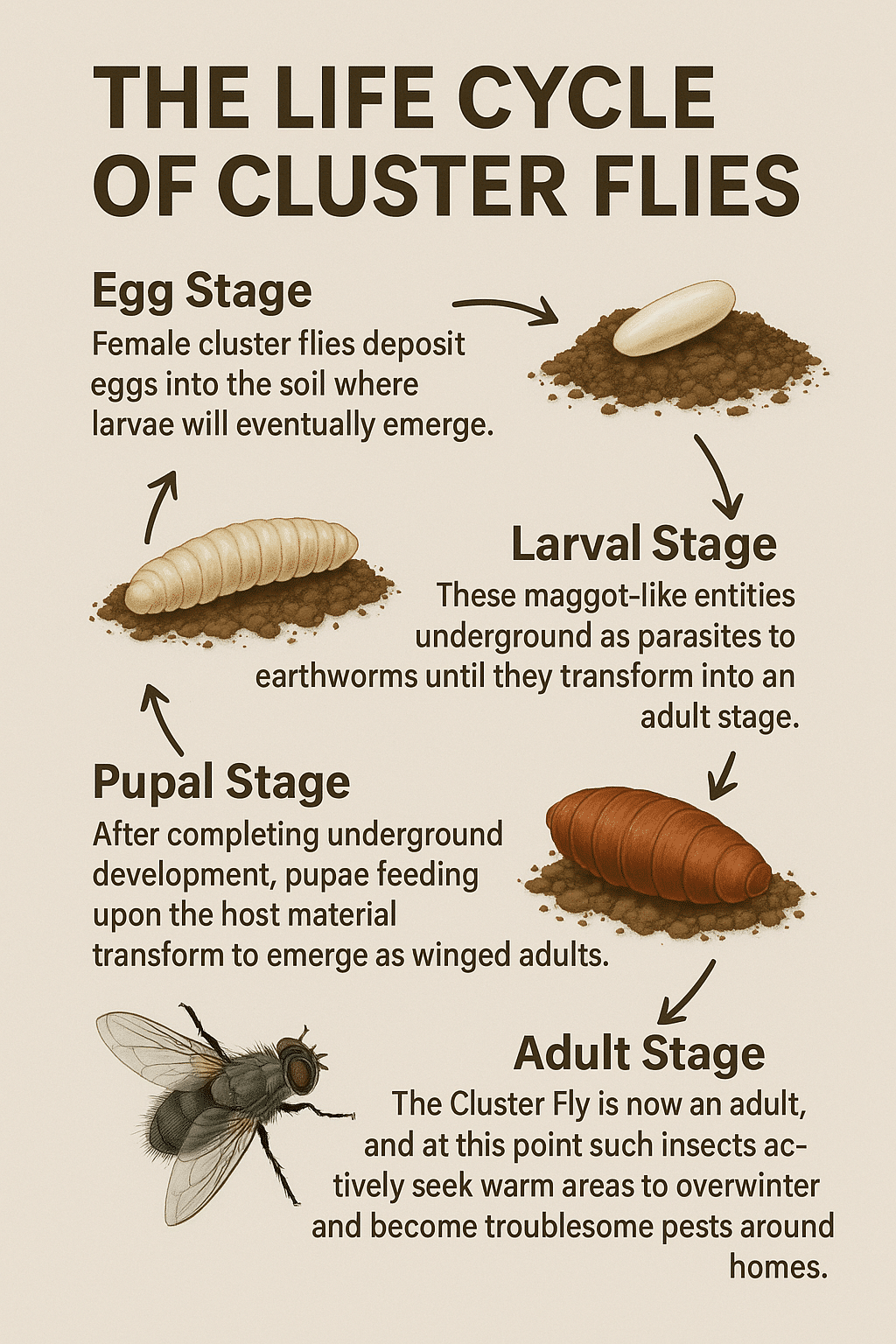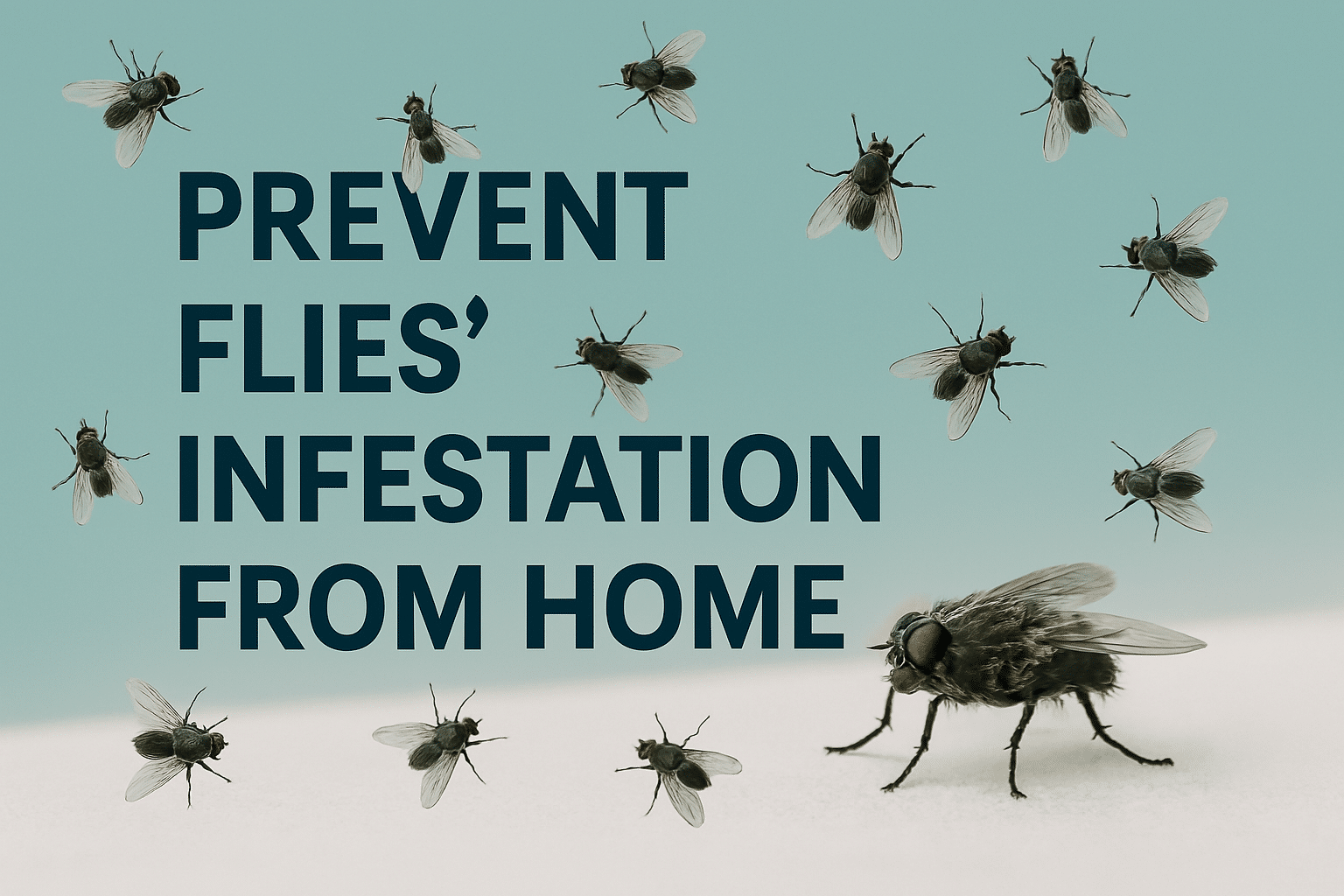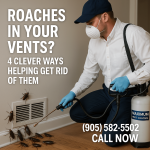
Discover Surprising Reasons Cluster Flies Invade Your Home!
Cluster flies in your house? We’ll explain why they love your home. Get simple, effective removal strategies that really work.
If you have noticed slow, noisy flies congregating around your home, especially near the windows, you possibly might be facing cluster flies. Although they pose no actual threat, unlike common house flies, cluster flies do fall on the nuisance side and tend to be annoying. This article aims to discuss what cluster flies are, why they have infested your home, and provide you with methods to control, or better yet, prevent such infestations.
Cluster flies (Polleniarudis) belong to the Calliphoridae family and are often confused with houseflies. They are quite common in North America and are notorious pests in homes. Here are some distinguishing characteristics:
– Appearance: Cluster flies measure 8-10 mm in length; these flies tend to be slightly larger than the common house fly. Unlike the house fly, cluster flies possess a checkered pattern on their thorax which is dark and non-metallic. Further, the upper abdomens of cluster flies are covered in golden-yellow hairs, making them appear fuzzy.
– Behaviour: Unlike house flies, cluster flies tend to be much slower in movement. Unlike houseflies, cluster flies are much slower in flight and have trouble flying in a straight line.
There is no link between cluster flies and filth or decay, since they do not deposit eggs in putrid refuse bins. At certain stages of their life cycle, these insects are associated with soil and earthworms, which explains why they can be so puzzling when they appear inside your home.
The Life Cycle of Cluster Flies
To better understand why cluster flies appear in your home, it helps to understand their life cycle too:
- Egg Stage: Female cluster flies deposit eggs into the soil where larvae will eventually emerge.
- Larval Stage: These maggot-like entities live underground as parasites to earthworms until they transform into an adult stage.
- Pupal Stage: After completing underground development, pupae feeding upon the host material transform to emerge as winged adults.
- Adult Stage: The Cluster Fly is now an adult, and at this point such insects actively seek warm areas to overwinter and become troublesome pests around homes.
Cluster flies are particularly drawn to heat and actively seek out warm areas during cold months. That is the reason they start entering buildings when autumn starts and temperatures begin to drop.
What Is the Reason for Cluster Flies on My Property?
Below are a couple of explanations that may aid to explain the infestation problems you are currently experiencing with cluster flies.
- They Are Looking for Warm Places for Hibernation
Cluster flies do not seek food or places to reproduce when entering your home. Their main focus is to identify a reasonable warm place which they can survive throughout the winter season. They look for any cracks they can find on walls or attics as well as any kind of holes in the walls during the colder months. They gather in such places during winter in huge numbers until spring when they can fly freely.
- Flies Drawn to a Source of Light
Cluster flies will commonly be spotted in autumn above windows and light fittings. They form clusters just like other types of flies on the sunny sides of fences as well as on window sills. With vents, windows and doors, cluster flies are able to easily gain access.
- Damp Soil and Earthworms
If the home is located next to a garden, field or lawn, then you can expect a cluster fly infestation. This is because damp soil offer cluster fly larvae the opportunity to feed on earthworms. As adult flies emerge from the ground, they look out for nearby houses which they use as overwintering spots and hence, your house becomes such place.
- Past Infestations
The Cluster Fly possesses a strong instinct to return home, thus they can revisit the same place year after year. If you had these insect problems in the past, you can bet as winter begins, some of those pests plan to return. And why wouldn’t they? Your building is conducive to their hibernation needs.
Identifying Cluster Fly Infestation at Home is crucial for any home or building owner so they can take swift action and then develop a more strategic long-term approach.
– Increased Fly Activity: Increased Fly Activity More than normal fly activity around the windows, the attic and even below sitting areas could be a sign of cluster infestation.
– Dead Flies: Dead cluster flies are frequently discovered in yards, parks, and field close to the windows and doors. They tend to become inactive on gloomy days.
– Buzzing Sound: Cluster flies are known for producing loud buzzing sounds. If you hear such sounds around the walls and attic corners, a large group of these pests are probably clustered around inside the ceiling in addition wasps nest hiding.
Ways to Keep Cluster Flies from Entering Your House
The best defensive strategy is attempting to stop cluster flies from coming into your house in the first place. Here are some useful techniques:
- Close up any gaps that can allow them access to the building.
Cluster flies are able to get in through very small gaps around windows, doors, air vents, and eaves. It would be a good idea to apply caulking, weather strips, or fine meshes to cover these points.
- Install window tight fitting screens especially lower and upper floor windows.
When installed properly, window screens not only prevent cluster flies from entering the house, but also help to maintain ventilation and light.
- Avoid using exterior lighting during the night close to windows and doors.
Because cluster flies get attracted to light, these actions will go a long way in reducing their attraction towards your house. If it is needed, switch to yellow “bug” lights as these work better on insects and have a lower attraction rate.
- Your Compound garbage should be kept clean always
Keeping a clean environment might keep cluster flies from breeding nearby that area. A few of them include lawn care, sealing gaps in the house’s foundation, and maintaining a compost pile, among others.
- Spray Insecticides
Insecticide application will most likely reduce the fly cluster populations if used in areas they are likely to enter through, as well as areas where they tend to gather. Caution should be provided at the time of application. Adhere to label instructions aimed at users not to harm people, pets, and plants. Professional pest control service may also offer preventive measures against cluster fly infestation as part of their maintenance services.
How to Eliminate a cluster Fly Infestation
If you have already spent the time here are solutions for you:
- Vacuum Hose Cleaner To Suck Them Up Fast
The simplest explanation is vacuuming is one of the most effective ways of removing cluster flies ever recorded. All you need to do is fetch a vacuum cleaner with a hose attachment which is capable of sucking any cluster flies resting off. Get window sills, yellow colour light fixtures, and make sure you dispose of the bag or canister outside, beyond the threshold to ensure that none can make their way back in.
- Fly Traps
These are either sticky, liquid bottles or electronic devices designed to attract and kill cluster flies and similar insects such as mosquitoes. They should be placed near traffic areas such as windows or the attic.
- Professional Pest Control
If the cluster flies become too numerous to handle personally, then it is time to seek professional pest control services. Trained Pest control professionals will not only exterminate the pests, but they will also give tips on how to avoid them in the future coming back.
- Prevent Future Infestations
Once you have completed dealing with the infestation, it is essential to take the right steps to prevent a re-occurrence. These can include sealing the entry points, ensuring that proper hygienic standards are met, and applying insecticides at strategic locations for best outcome.
Conclusion
Cluster flies can be an annoyance, but they are not a serious health risk or inflict damage to the structure of the house. Understanding the causes of their presence and implementing effective control measures can greatly reduce their population nearby the property.
Cluster fly prevention includes sealing off entry points, reducing attractants, and maintaining vigilance. Got House Flies Problem? Connect with Maximum Pest Control services insured and bonded team to help eliminate infestations of cluster flies completely from your home or business calling (905) 582-5502.






